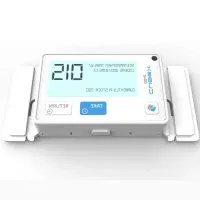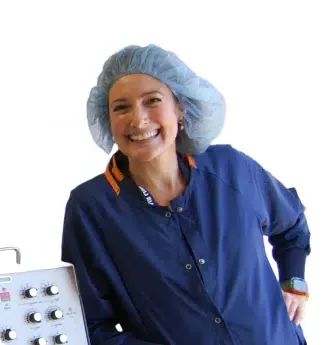Home > Product Design & Engineering Services > User-Centered Design > User Interface Design
When it comes to medical devices, our user interface designers meticulously craft intuitive interactions with safety in mind. We specialize in GUI design and development, creating interfaces that provide vital information while maintaining user-friendly navigation and visual appeal. Through rigorous user testing, we ensure that our designs meet the needs of healthcare professionals and patients.
Human interface guidelines offer software developers recommendations on how they can improve the visual experience for users by making the user interface easier to navigate, learn, and use. This has many benefits for your users, including:

Heuristic evaluation will come up a lot in UX design – heuristic evaluation is used by UX designers to identify any usability issues within a device or product. To do this, usability testing experts will compare a product’s design to recognized usability principles – also known as heuristics. Once they encounter usability issues, they assign a severity rating to each one, enabling them to focus on each issue from most critical to least critical. Heuristic evaluation is important for delivering a high quality UX system to users, as it ultimately improves the usability of a product.
When designing a medical device, it is easy to overlook some aspects of the design process. Haptics are an example of one of the small but meaningful ways you can improve the usability of your product. Broadly speaking, haptic design focuses on the multisensory interaction between your product and the user by dictating the tactile response your product or device will provide. Haptics are largely used across our modern digital world, from phone vibrations to gaming applications. One of the main ways we interact with products is our hands – therefore, it makes sense to enrich your device with haptics that users will appreciate.

Another important component of user-centered design if your graphical user interface (GUI). GUIs help your clients use your device without needing to know exactly how it works. For example, the use of commonly used icons make it easy for users to understand how to achieve commands on your device, without the need for further research. Whilst it may seem simple, GUI is one of the design process steps that must be mastered if you wish to ensure your product reaches the market. If there is an issue within a medical device’s GUI user, the effect can seriously harm the user, the patient, or even both.
Luckily, Nectar has plenty of experience with GUI designs. As an ISO 13485:2016 certified company, we place safety and effectiveness at the forefront of our process. We ensure your device has an effective, safe GUI, so that your regulatory review goes smoothly, and your users and their patients are protected.

Many medical devices are composed of UIs that feed vital information back to the individuals using the devices. Whilst on the surface, these may all look different, they have one thing in common: they all have physical interfaces that are easy to use and interpret.
Nectar combine an expert team with over 30 years of experience to ensure physical interfaces are easy to use, accurate, and robust. We look at all aspects of user interface, including iconography, sounds, and colors. We know the FDA requires detailed user interface specifications for medical devices – and we deliver.

Qubex Q-bud
Industrial Design, Mechanical Engineering, User Experience (UX/UI), Contextual Research, Industrial

Darren is an accomplished, dynamic leader who founded Nectar, X-Naut, and BreathDirect. He is committed to improving the world through the synthesis of technology, science, and art. Under Darren’s leadership, Nectar is leveraging the latest advances in cutting-edge technology to transform medical device development and design. As part of his

Dr. Steve Wells holds a critical role in steering Nectar’s operations and defining its strategic direction. His impactful leadership has established a clear course for the company’s success. He has revitalized the company with a passion for maximizing impact through expert resource utilization since taking the helm in 2020. Steve has boosted Nectar’s portfolio, streamlined processes, and reinvigorated its innovation agenda, all with the goal of developing life-saving and impactful products. His background in senior leadership roles at Georg Fischer and his people-focused, results-driven leadership style make him an invaluable asset to our team. Steve’s extensive knowledge in chemistry, biocompatibility, and biology only adds to his value as a team member.





Adam Marten has worked in the aerospace and consumer products industries since 2006 with lead engineering experience in conceptual design, product development, analysis and performance qualification testing. Adam has experience leading a range of technical projects, including multiple structural analyses for military and aerospace applications. He has also worked directly with engineering teams to develop medical devices and laboratory instrumentation.






With over two decades of experience in healthcare innovation, Kerry has been instrumental in transforming patient care and improving patient outcomes across the globe. Her extensive knowledge and expertise in the cardiovascular and cardiothoracic operating room, as well as her experience in emergency medicine, geriatrics, pediatric psychiatry, and main OR, make her a versatile and valuable member of the team. From small hospitals to large teaching institutions, Kerry’s 20 years of experience with patient documentation, including the use of EPIC, Cerner, and Meditech electronic charting systems, have positioned her as a leader in her field. Her recent involvement in helping transition the Providence St. Vincent Medical Center’s Cardiac Surgery program from paper charting to electronic documentation further underscores her commitment to advancing the healthcare industry.








